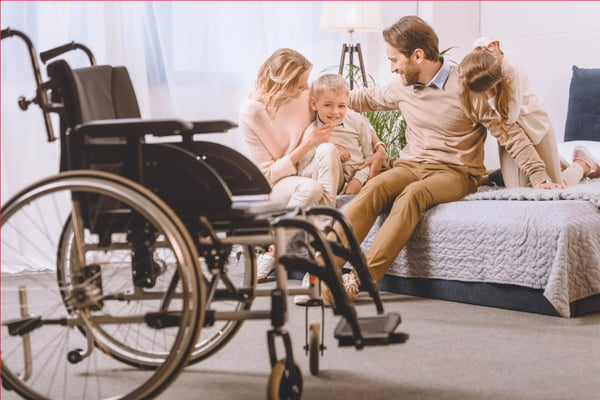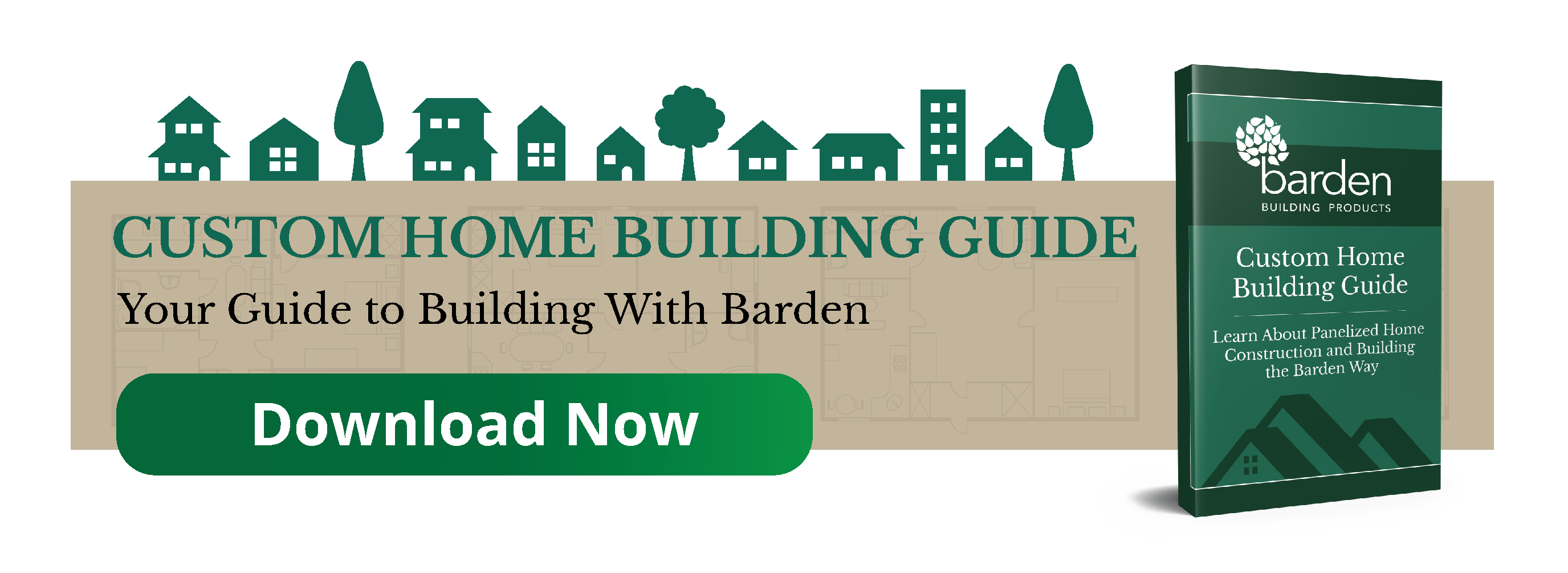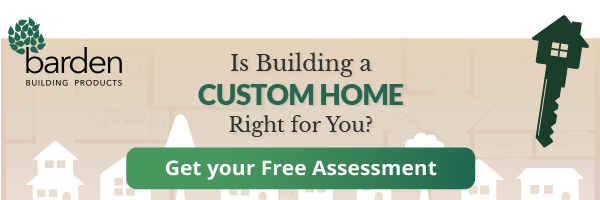
Unfortunately, it seems as though “accessible home” has become a buzzword in the home building community with many misconceptions surrounding the true meaning of universal design and home accessibility.
To some, accessible home design simply means adding a wheelchair ramp. While this is one facet of universal, accessible design -- there is so much more to making a home user-friendly to all.
Custom home design provides a unique opportunity for universal design for accessibility. Rather than trying to retrofit or remodel an existing house to meet the needs of all, a custom home is designed and built to suit.
The 7 Principles of Universal Design & Custom Homes
Universal design in custom home floor plan designs is a philosophy that something should be designed in a way that everybody is able to use the house in the same way regardless of physical ability.
To meet the tenets of this, there are seven principles of universal home design that should be integrated into a custom home:
- Useable regardless of ability – Whether someone in the home is able-bodied, disabled, elderly, or a child -- everyone can use the features of the home in a similar fashion.
- Flexibility – Spaces within the home have multiple uses or can be reconfigured for different activities or abilities.
- Simplicity – Everything in the home is easy to use, and where you expect them to be. This is especially relevant for light switches in both placement and usability.
- Perceptible information – The functionality of everything in the home is easily understood at a glance. For example, faucets have clearly labeled “hot” and “cold” directions.
- Minimized potential for hazard – All potential opportunities for slips, trips, falls, or any other physical risk are removed from the home. Think: adding carpet to hardwood staircases.
- Low physical effort required for living – Elements of a universally accessible home should be effortless for all residents to interface with. For example, accessible homes do not feature heavy, cumbersome windows and doors or high steps to get in and out of the shower.
- Size and space for users – No matter what, the home provides ample space to move and operate all of the features in the home. This includes wheelchair or other mobility device accessibility.
One of the common misconceptions of accessible design is that it is only worth thinking about for people with physical disabilities and movement impairments. The truth is, we are all temporarily able-bodied.
To a certain extent, custom home design with accessibility in mind is long-term planning in action. The whole purpose of universal design is that it fits everyone, at every stage of life, regardless of ability. It’s always smart to invest in universal design to be inclusive of everyone in your life presently and in the future.
Curious About the Other Ins-and-Outs of Custom Home Building?
Explore our Custom Home Building Guide:
6 Common Universal Design Features in Custom Home Layouts
If you’re downsizing and looking to build a home to adhere to universal design and accessibility for the rest of your life, here are some features you might want to look into:
- “0” Entry Doors, Showers, and Outdoor Spaces
- 3’ Wide Doors & 42” Wide Hallways
- Bright Lighting in All Areas of the House
- Light Switches and Outlets Placed at Easily Accessible Heights for All
- Stacked Closets on the First and Second Floor
- Alarms with Visual Cues
1. “0” Entry Doors, Showers, and Outdoor Spaces
This is generally thought of as a wheelchair-accessible feature, and rightfully so. It allows those with mobility aids to freely enter and exit spaces without any hindrance.
However, this feature is also important for those who have small children or the elderly around, since even the smallest entryway lip can be a hazard for a trip and fall.
Outdoor spaces such as decks and patios are often forgotten when addressing accessibility. Ensure all surfaces are smooth, and you’ll be in adherence to universal design and accessible for all.
2. 3’ Wide Doors & 42” Wide Hallways
This is the minimum width to ensure ease of movement for anyone utilizing mobility aids.
When furnishing your home with desks, tables, and vanities -- ensure they are at least 30” wide, 19” deep, and 27” high (in general) to allow comfortable use for all.
3. Bright Lighting in All Areas of the House
While “mood lighting” can be cozy and trendy, it’s a hazard for some with vision impairments.
Make sure each room in the house has ample, bright, overhead, and supplemental lighting to accommodate all. After all, who wants to squint to see in their own home?
4. Light Switches Placed at Easily Accessible Heights for All
All the bright lighting you’ve installed in your home is useless if only some members of the home are able to turn them on. Make sure light is accessible to all.
5. Stacked Closets on the First and Second Floor
Having ample closet space on the first floor is an accessible design feature in and of itself. For those with mobility limitations, going up and down the stairs just to grab an extra sweater if it’s chilly is an unnecessary hindrance.
Additionally, if your closets are stacked, they can be easily converted into an elevator shaft if needed to further improve accessible design.
6.Alarms with Visual Cues
For those who are hearing impaired, it is vital for safety that all sound-based indicators are adapted. This includes: fire and carbon monoxide alarms that flash rather than beep, as well as doorbells that have flashing lights for visual cues.
Creating a Universally Accessible Custom Home
The truth: there is a very poor understanding of accessibility needs not only in the home building and remodeling community but in our culture as a whole.
Too often we see situations where a homeowner finds themselves in need of an accessible bathroom to accommodate a family member unexpectedly. They call a contractor, who builds them an ADA-compliant bathroom.
However, this fails to account for the individual homeowner and their needs. If an ADA-compliant bar isn’t placed correctly for the individual based on their height and other considerations, it could cause strain and harm while using. While ADA guidelines and regulations are great, universal design and accessibility should not be a “one size fits all” approach.
The best way to create a universal design home is to account for any and all accessibility concerns during the design phase and to consult with an expert throughout its construction. By doing both, your home is custom-tailored to your needs currently, and any needs that might pop up in the future.
Create a Universal Design Home with Barden
All of our home plans can be modified to incorporate any of the features mentioned, or better yet, drawn from scratch around your needs. Accessible Home Solutions is available to consult for any design to make sure you’re able to live in your home comfortably for as long as possible.
With our manufacturing division, North American Truss, fabricating your home’s frame exactly to your plan, there is nothing left to interpretation. All the unique features you want are included. You also choose the crews who build your home so you aren’t stuck with an unadaptable crew. For example, you can pick an electrician that understands your need for switches and outlets in special locations and can place them skillfully and without hassle.
Since we bring the design team and build team together, all of your needs will be met with no delays or headaches.
Is a Custom Home Right for You?
Find out by completing our free assessment!
This article was originally published in 2019 and was recently updated to reflect current industry trends.



